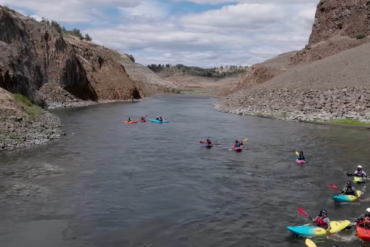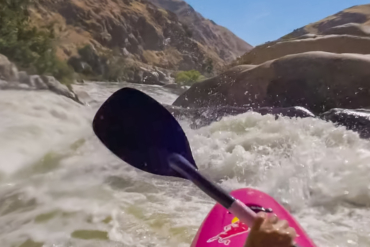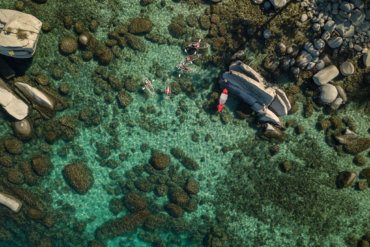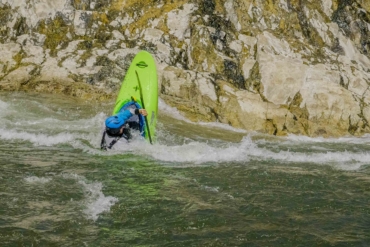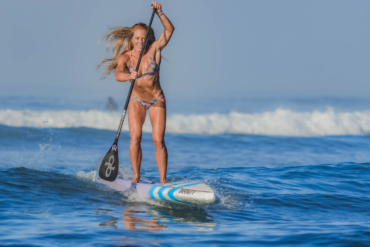By RYAN STUART
Spend a bit of time on any popular whitewater river in North America and you’re almost guaranteed to see a Jackson Kayak whitewater boat. In the last five years the company run by Eric Jackson, one of the biggest names in modern freestyle kayaking, has grown from upstart to industry leader. After paddling the 2010 All Star playboat it’s easy to see why.
The All Star, $1,200, is the middle child in a four boat series — from smallest to biggest: Star, All Star, Super Star and Mon Star — designed for modern playboating, including spinning, flipping and flying in holes and on waves. Each of the Star series boats are built on the same design, but they come with increasing volume to accommodate heavier and taller paddlers.

The boats come in two constructions, SL and Elite. The Elite is lighter, has higher-end outfitting, is slightly more scratch resistant, and is more expensive by about $50.
This spring, I tested the All Star boat in an Elite lay up, which has a recommended weight range of 130 to 200 pounds and a volume of 55.5 gallons. At a diminutive five foot, ten inches in length, a stubby stern, heavily rockered bow and a flat hull, there was no doubt this boat is meant for playing.
Play used to be synonymous with pain (from a tight fit) in the boat, but not any more. Outfitting is a big selling point, and Jackson has been a leader in this category with its Sweet Cheeks, inflatable bean bag seats, and air bag foot braces. Sitting in the boat there’s a noticeable focus on comfort that lasted through two or three hours on the river. Leg positioning is a little more narrow than previous generations of playboats, which I found more comfortable over the long haul.

I expected the comfort. But a surprise was the boat’s weight. At 30 pounds, it is a good five to 10 pounds lighter than a typical river kayak. That’s a big difference on and off the water.
My second surprise was the boat’s speed. I expected it to spin easily, which it did. (At times I found myself spinning so fast I was getting dizzy.) I also expected it to get airborne easily. The bow and stern are grabby, popping high and fast with control.
But I didn’t think I’d ever describe a sub-six-foot boat as “fast.” Relatively speaking, though, the All Star is speedy. I think this is because it’s such a good surfing boat, latching onto just about any ripple on the river, zipping across with a lot less effort than expected. Indeed, I found the surfboard-like shape of the hull to be a wave-catching machine. I often found myself falling off waves and was surprised to be sliding down the face again with a couple paddle strokes.

I obviously loved the All Star. But there were a few minor drawbacks to consider. With an inflatable seat and foot block, the cockpit is a mess of hoses. The screws for moving the seat positioning are hard to manipulate. Despite being the right weight, taller paddlers (anyone above six feet tall) might have trouble sitting comfortably and having the boat properly balanced. The Super Star model is a better bet if you’re over six feet in height.
Overall, the All Star was a fun and versatile boat. While it’s designed as a freestyle machine, the kayak can run the rest of the river well. I paddled up to class IV water, including eight-foot waterfalls and technical drops in the boat, and it was capable the whole way.
With predictable and forgiving performance, the All Star could be used among a quiver of boats for advanced paddlers. For wannabe freestyle stars like me, the All Star is a boat to progress with and perform in for years to come.
—Ryan Stuart is Gear Editor at Explore magazine.
